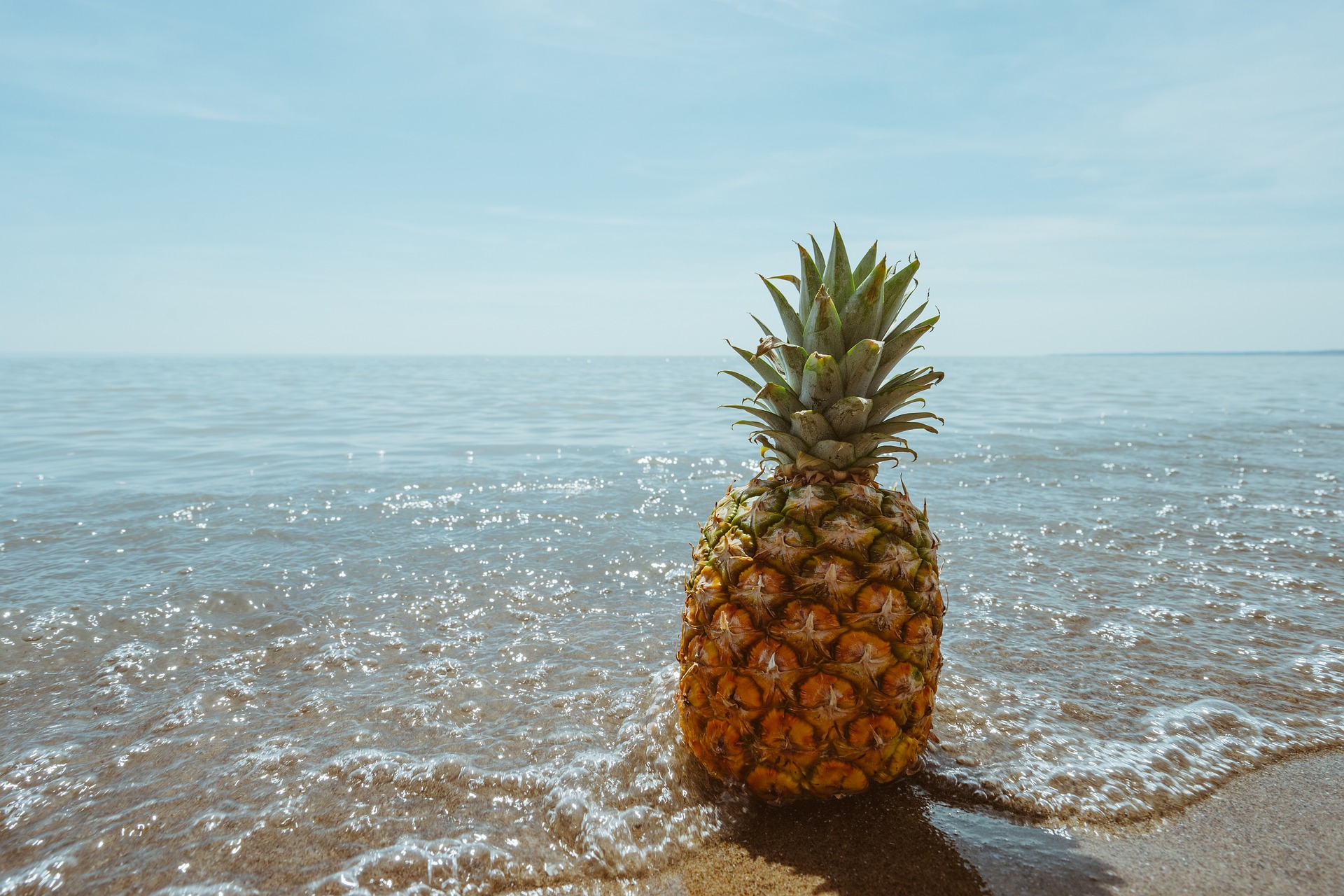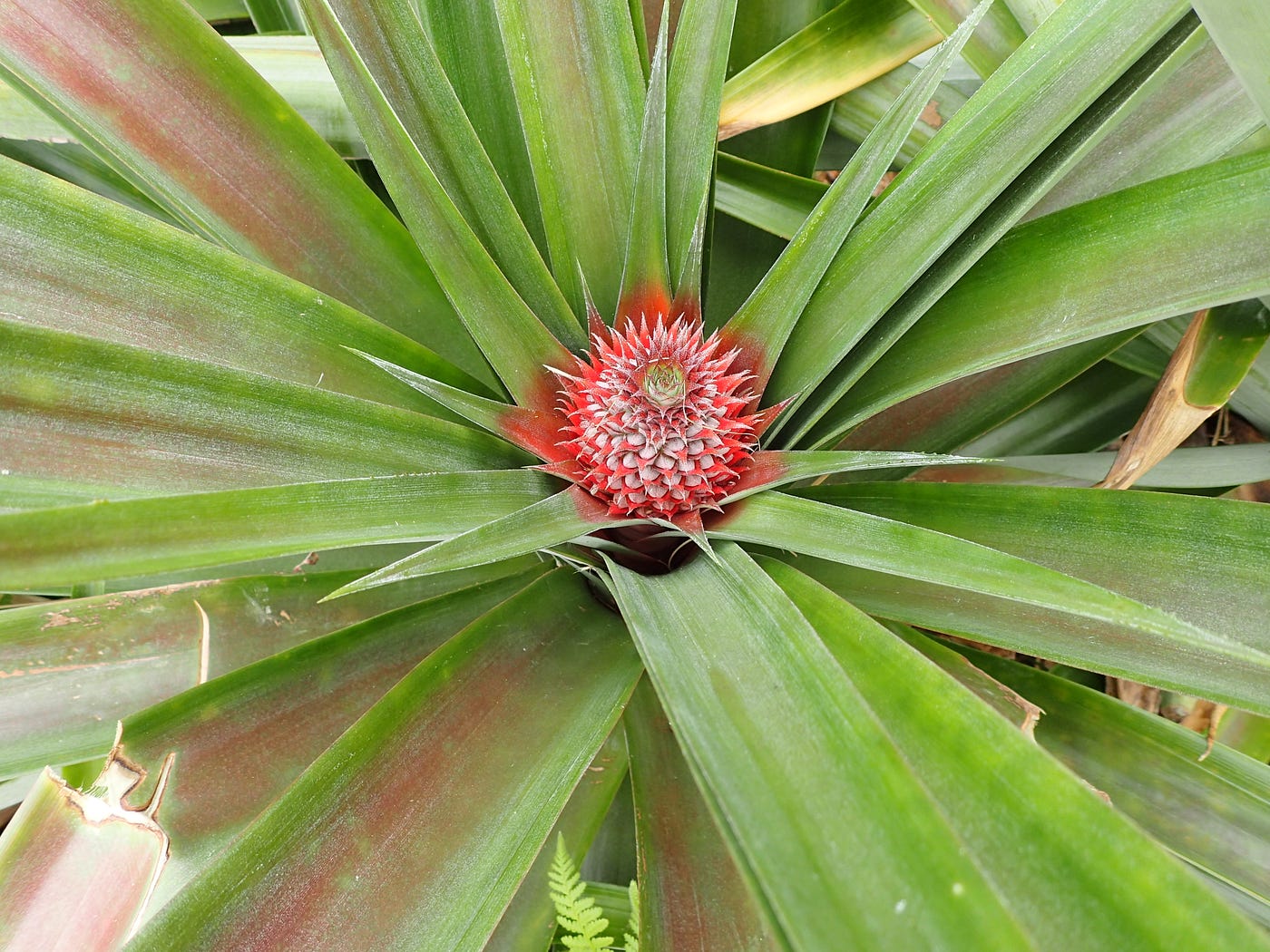
Nature's bounty or a masterclass in genetic tinkering? The humble pineapple, with its crown of spiky leaves and sun-kissed flesh, sits at the crossroads of this intriguing debate. Discover is pineapple a man made fruit?While most fruits bask in their untamed origins, whispers swirl around the pineapple, some hailing it as a botanical prodigy, others questioning its very naturalness. Did human intervention shape this golden treasure, or is it a product of pure evolutionary magic?
Prepare to embark on a juicy investigation, one that unravels the tangled threads of pineapple cultivation and genetic modification. We'll dissect the contrasting perspectives, delving into historical accounts, scientific insights, and modern agricultural practices. From the thorny wilds of South America to the meticulously cultivated pineapple fields of today, we'll trace the evolutionary footprint of this captivating fruit.
What Makes A Pineapple A Pineapple?
The pineapple, with its spiky crown and golden flesh, might seem like an exotic anomaly in the fruit kingdom. But peel back its tropical layers, and you'll discover a fascinating tale of evolution and adaptation etched within its very structure.
Species Classification
The pineapple, known formally as Ananas comosus, holds a singular throne within the Bromeliaceae family. This diverse clan boasts over 2,000 members, ranging from tiny air plants to towering trees. But the pineapple stands out, crowned as the sole species within the Ananas genus, making it a botanical VIP with no close relatives.
Architectural Marvel - Form And Function
Nature, it seems, doesn't believe in simplicity. The pineapple's anatomy is a masterpiece of efficient design. Its fruiting structure, technically called a syncarp, is formed by the fusion of multiple bracts and flower ovaries. This unique arrangement creates the characteristic hexagonal pattern on the rind and houses the juicy, edible flesh.
The spiky crown atop the fruit isn't mere decoration, it's a cluster of modified leaves called bracts. These bracts offer protection for the delicate fruit and serve as a vegetative propagation tool, allowing pineapples to be easily replanted.
Speaking of roots, the pineapple boasts a shallow root system, adapted to survive in nutrient-poor soils. This unique root structure also makes it vulnerable to waterlogging, explaining why the fruit thrives in well-drained settings.
From Flower To Feast - The Growth Journey
The pineapple's journey from blossom to bite is a captivating one. It all begins with a vibrant inflorescence, a central spike adorned with tiny purple flowers. After pollination, the ovaries on the spike swell, gradually fusing into the syncarp we know as the fruit. Meanwhile, the surrounding bracts morph into the protective crown.
This development process takes around six months, during which the fruit accumulates sugars and other delicious compounds. When ripe, the telltale sweet aroma signals the pineapple is ready to be harvested, a true testament to nature's ingenuity.
Is Pineapple A Man-Made Fruit?
The pineapple, with its sunshine-hued flesh and spiky crown, has long sparked curiosity about its origins. Is it a product of meticulous human intervention, a genetically modified concoction, or a pure gem of natural evolution? The answer, like the fruit itself, is layered and surprising.
While the pineapple we relish today wouldn't exist without human influence, it's not entirely "man-made." Its story is an intricate dance between nature's artistry and human tinkering. Let's peel back the layers and dissect the truth:
Evolution's Brushstrokes
The wild ancestor of the pineapple, a thorny, inedible fruit native to South America, underwent a remarkable transformation over millennia. Through natural selection, its size increased, sweetness intensified, and thorns diminished, culminating in a more palatable fruit. In this sense, the pineapple's foundation is firmly rooted in natural evolution.
Human Cultivation And Selective Breeding
Around 3,000 years ago, indigenous peoples in South America began cultivating wild pineapples, selecting for desirable traits like larger size, sweeter flesh, and fewer thorns. Over generations, these selective practices unintentionally guided the evolution of the fruit, gradually shaping it into the familiar form we know today.
Modern Enhancements, No GMOs
Today's commercially available pineapples are further refined through selective breeding techniques. However, it's important to note that no genetically modified pineapples exist in the market. The enhancements achieved solely through traditional breeding practices, focused on characteristics like disease resistance and uniform ripening.
A Blurred Line
Where does that leave us? Is the pineapple truly man-made? The answer lies in the blurry line between natural evolution and human intervention. While the wild ancestor couldn't be mistaken for its modern counterpart, the transformation stemmed from both natural forces and centuries of human cultivation.
History And Domestication Of Pineapple
Forget bland apples and predictable oranges; the pineapple's story is a swashbuckling saga of thorny wilderness, intrepid explorers, and global culinary conquests. So, strap yourselves in, history buffs, as we embark on a journey from the humid Amazon to the vibrant markets of the world, charting the rise of this spiky treasure, the pineapple.
From Thorny Origins To Cultured Delicacy
The pineapple's tale begins in the steamy jungles of South America, around 3,000 years ago. Here, amidst the tangled undergrowth, thrived its wild ancestor, a thorny, inedible fruit known as the "nana." Yet, within this prickly exterior, nature had planted the seeds of sweetness.
Indigenous peoples, the Guaraní and Kayapo, were the first to recognize this potential. Through careful observation and selective breeding, they began nurturing the nana, slowly shaping it into a more palatable form, laying the foundation for the pineapple we know today.
Enter The European Stage
Fast forward to the 16th century, when Christopher Columbus stumbled upon the pineapple in Guadeloupe. Mesmerized by its golden flesh and exotic aroma, he dubbed it "piña de Indias," meaning "pine of the Indies." This encounter sparked a wave of European intrigue, propelling the pineapple from Amazonian obscurity to the royal tables of Spain and Portugal.
A Tropical Pioneer
But the pineapple's true champion was Captain James Cook. During his Pacific voyages in the 18th century, he recognized the nutritional value of the fruit for preventing scurvy among his crew. He diligently collected and transported pineapple plants, introducing them to tropical outposts throughout the British Empire. This strategic move planted the seeds for the pineapple's global reign.
From Tahiti To Tables
The 19th century saw the pineapple's popularity explode. The invention of canning in 1820 allowed large-scale production and distribution, transforming the fruit from a luxury item to a treat accessible to the masses. Plantations sprung up across Hawaii, Thailand, and the Philippines, turning the pineapple into a major commercial crop and a beloved symbol of tropical paradise.
A Legacy Of Sweetness
Today, the pineapple reigns supreme as the fifth most-produced fruit globally, a testament to its captivating journey from thorny enigma to culinary star. Its story whispers of ancient wisdom, adventurous explorers, and the relentless pursuit of deliciousness. So, the next time you savor a slice of this golden bounty, remember, you're holding in your hands a vibrant slice of history, a juicy fruit with a story as sweet as its flesh.
The Science Behind Pineapple Reproduction
The pineapple, with its spiky crown and golden heart, captivates not just our taste buds but also our curiosity. How does this tropical treasure propagate its sweet legacy? Join us on a scientific expedition into the world of pineapple reproduction, where nature crafts miniature marvels with every bloom.
A Dance Of Pollinators
Unlike most fruits, pineapples boast multiple flowers tightly clustered on a central spike. These miniature blossoms, though beautiful, require a bit of help to set fruit. Enter the pollinators, a cast of winged allies like hummingbirds, bees, and even bats. As these flitting friends dance from flower to flower, they unwittingly transfer pollen, triggering the magic of fertilization.
Sowing The Seeds
Fertilization sets in motion a cascade of cellular transformations. Within the ovaries of the flowers, seeds begin to develop, cradled in a fleshy matrix that eventually forms the juicy pulp we devour. Each pineapple seed boasts a hard coat and a feisty little plant embryo, ready to embark on its own tropical adventure.
Nature's Bounty, Nature's Challenges
While natural pollination ensures pineapple reproduction, it's not a foolproof system. Reliance on specific pollinators introduces vulnerability to environmental factors and habitat loss. Additionally, pineapple seeds take months to germinate and produce mature plants, limiting the rate of propagation.
Cultivating A Helping Hand
Human ingenuity steps in to overcome these challenges. Commercial pineapple farms often bypass natural pollination methods by employing a technique called "crown induction." This involves treating the pineapple plant with a specific hormone, stimulating the growth of new shoots from the crown. These shoots, aptly named "pups," can be detached and replanted, offering a faster and more controlled method of propagation compared to seed germination.
A Tale Of Two Paths
Natural pineapple reproduction relies on the whims of pollinators and the slow dance of seed development. While effective, it can be unpredictable and time-consuming. Human intervention, through techniques like crown induction, offers a faster and more reliable approach, ensuring bountiful harvests and satisfying our craving for these sun-kissed delights.
Cultural And Economic Impact Of Pineapples
Forget just fruity flavor – the pineapple has sunk its spiky crown deep into the cultural and economic soil of countless societies. From a symbol of hospitality to a tropical cash crop, let's peel back the layers and explore the economic and cultural impact of this sunshine-hued fruit.
A Symbol Woven Into Traditions
Across the globe, the pineapple transcends mere taste, carrying rich cultural meanings. In Hawaii, the "halau" – or pineapple crown – was worn by chiefs and dancers, signifying abundance and royalty. In Thailand, carved pineapples adorn temples, symbolizing prosperity and good fortune. And in Puerto Rico, "piña coladas" aren't just cocktails; they're a potent symbol of island celebration and relaxation.
Spreading Sweetness (and Profits)
From tropical havens to global markets, the pineapple's economic impact is undeniable. The fruit has fueled entire industries, employing countless farmers, distributors, and processors. Thailand alone holds the crown as the world's largest pineapple producer, with exports generating billions of dollars in revenue. In countries like Costa Rica and the Philippines, pineapple plantations provide crucial economic lifelines for local communities.
Balancing Sweetness With Challenges
But the economic journey isn't all sunshine and piña coladas. Large-scale production can often lead to environmental concerns like deforestation and water depletion. Ethical labor practices and fair trade initiatives are crucial to ensure the industry's success doesn't come at the cost of human and environmental well-being.
A Legacy Beyond The Golden Flesh
Next time you savor a slice of juicy pineapple, remember you're not just indulging in a tropical treat. You're biting into a fruit woven into cultural tapestries, a fruit that fuels economies, and a fruit that, when sustainably cultivated, can offer a sweet taste of prosperity for all.
FAQ's About Is Pineapple A Man Made Fruit?
Where Is Pineapple Made From?
Pineapple plants can mostly be found in Latin America and West Africa. In Europe, the majority of pineapples in our market come from Costa Rica, which supplies 75% of the pineapples found in the EU.
Where Are Pineapples Found Naturally?
Pineapples are indigenous to South America and the Caribbean, but they are grown in large quantities in tropical Asia as well. According to Statista, the top three countries for pineapple production in 2021 were Costa Rica, Indonesia and the Philippines.
Is Pineapple Genetically Modified?
Pink pineapples are genetically modified fruit that stay pink and sweeter than yellow pineapples. GMOs, or genetically modified organisms, are crops produced using a precise method of plant breeding to achieve desirable traits. Desirable traits include resistance to pests or non-browning produce to reduce food waste.
Conclusion
The debate around whether pineapples are man-made centers on the fruit's origins and cultivation history. Pineapples, scientifically known as Ananas comosus, were indeed domesticated and selectively bred by humans over centuries, stemming from wild variants native to South America.
Indigenous peoples in the region, like the Tupi-Guarani tribes, played a crucial role in early pineapple cultivation, gradually refining the fruit into the sweeter, less fibrous versions we commonly know today.


